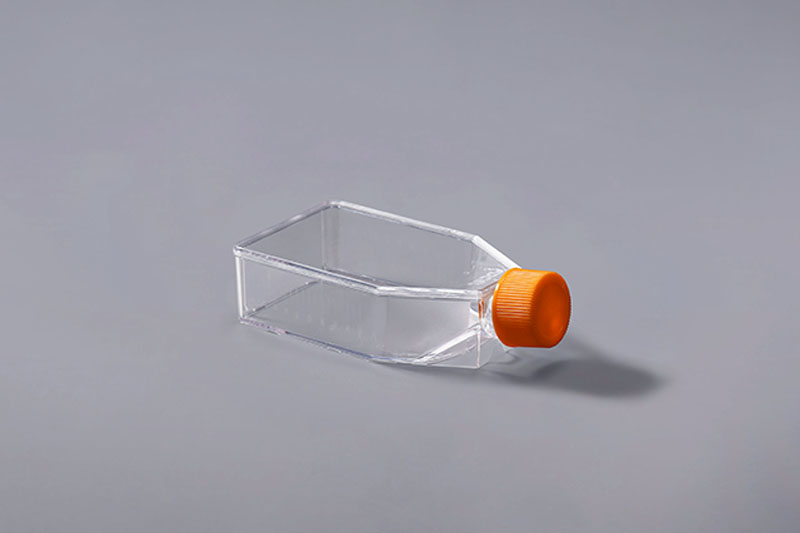When culturing cells, the cell culture flask is a kind of container that is often used. It adopts a wide neck design, which is convenient for experimenters to operate. The growth of cells requires specific conditions, of which a sterile environment is a very important point.
Nontoxicity and sterility are the primary conditions for culturing cells in vitro. In the living body, the detoxification system and immune system can resist the invasion of microorganisms or other harmful substances, but in the process of in vitro culture such as cell culture flasks, the lack of the protection of the body's immune system and the loss of defense ability against microorganisms and harmful substances detoxification ability. To ensure that cells can grow and reproduce in vitro, it is necessary to ensure a sterile work area, good personal hygiene, sterile reagents and media, and aseptic handling.
FuDau T75 Cell Culture Flasks
Common microbial contaminations include mycoplasma, bacteria, and fungi. Mycoplasma has no lethal toxicity, can coexist with cells for a long time, and has potential effects on cells, but it is small in size and difficult to identify. It can be detected by means of lichen red or Hoechst33342 staining. Bacteria proliferate quickly, can multiply in a large amount in a short time, and produce toxins to kill cells. There are many kinds of fungi, which are visible to the naked eye, floating on the surface of the culture medium, and can be filamentous, tubular or dendritic.
FuDau T225 Cell Culture Flasks
Of course, a sterile environment is only one of the important conditions for culturing cells in a cell culture flask. Others include appropriate temperature, osmotic pressure, and pH value of the gas environment, which are the basic conditions required for cell growth.
The FAI climbed 5.9 percent year-on-year in the first 11 months of 2018, quickening from the 5.7-percent growth in Jan-Oct, the National Bureau of Statistics (NBS) said Friday in an online statement.
The key indicator of investment, dubbed a major growth driver, hit the bottom in August and has since started to rebound steadily.
In the face of emerging economic challenges home and abroad, China has stepped up efforts to stabilize investment, in particular rolling out measures to motivate private investors and channel funds into infrastructure.
Friday's data showed private investment, accounting for more than 60 percent of the total FAI, expanded by a brisk 8.7 percent.
NBS spokesperson Mao Shengyong said funds into weak economic links registered rapid increases as investment in environmental protection and agriculture jumped 42 percent and 12.5 percent respectively, much faster than the average.
In breakdown, investment in high-tech and equipment manufacturing remained vigorous with 16.1-percent and 11.6-percent increases respectively in the first 11 months. Infrastructure investment gained 3.7 percent, staying flat. Investment in property development rose 9.7 percent, also unchanged.
 English
English




















































